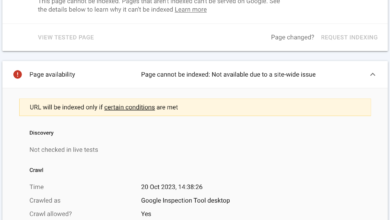How to Make Your Social Media Content More Accessible
How to Make Your Social Media Content More Accessible

Social media has become a robust tool for businesses and individuals to share their messages. However, as more people rely on social media to access information, it’s essential to ensure that our content is accessible to everyone. This includes people with disabilities who may use assistive technology to navigate the web. In this article, we will discuss some points on how to make your social media content more accessible, with insights from a Wikipedia consultant.
Use alternative text for images.
When posting images on social media, include alternative text (alt text) that describes the image for visually impaired people. This can be done by including alt text to the image directly on social media platforms or using a tool like Yoast SEO on WordPress. Alternative text should be concise, descriptive and include essential details from the image.
According to Stephanie Elliott, a Wikipedia consultant, and editor, “Alternative text helps provide a better user experience for people who rely on assistive technology to navigate the web. It also helps search engines understand the content of an image, which can improve SEO.”
Add closed captions to videos.
If you’re posting videos on social media, consider adding closed captions for viewers who are deaf or hard of hearing. This can be done by uploading a transcript of the video to YouTube and enabling closed captions. You can also utilize tools like Rev or Subtitle Horse to create captions for social media platforms like Facebook or Instagram.
“Closed captions not only make videos accessible for people with hearing disability, but they also benefit people in noisy environments or who prefer to watch videos without sound,” notes Elliott.
Choose accessible fonts and colors.
When creating graphics or text-based content for social media, be mindful of the fonts and colors you choose. Avoid using fancy fonts or small font sizes, as they can be challenging to read for people with visual importers
ailments or cognitive disabilities. Choose high-contrast color schemes to make text stand out, and avoid using color alone to convey information.
Elliott emphasizes, “Accessible design isn’t just about making sure that content is legible for people with disabilities. It’s about creating a more inclusive web for everyone.”
Write clear and concise captions.
Captions on social media are essential not only for accessibility but also for engagement. When writing captions, be sure to keep them clear and concise. Use plain language and avoid using too many emojis or slang that could be confusing for people who are not familiar with them.
“Clear and concise captions are easier to read for everyone, regardless of their abilities. They also make it easier for people to engage with your content and share it with others,” adds Elliott.
Provide links to additional resources.
If you’re sharing complex or technical information on social media, provide links to additional resources that explain the topic in more detail. This can help people needing additional information or context to understand the content. Links can be included in the caption or added to the image itself.
“As a Wikipedia consultant, I understand the importance of providing additional resources to help people learn more about a topic. This benefits not only people with disabilities but anyone wanting to learn more,” concludes Elliott.
Conclusion:
In conclusion, making social media content accessible ensures everyone can participate and engage with your brand online.
By enforcing the tips and best practices outlined in this article, you can create more inclusive, diverse, and engaging content for all your followers. Additionally, consulting with a Wikipedia consultant can help you create a Wikipedia page that is accessible and accurate while also boosting your online presence and credibility.
Remember, accessibility is not only about complying with legal requirements or being politically correct. It is also about being a responsible and ethical business that values diversity and inclusion.
By making your social media content accessible, you are fulfilling your legal and moral obligations and opening up new opportunities for growth and engagement with a broader audience.
So, take the time to review your social media content and make the necessary changes to ensure it is accessible to everyone.
You might be amazed at the positive impact it can have on your brand and your followers. And if you need help or guidance along the way, don’t hesitate to contact a Wikipedia consultant or other accessibility experts who can provide valuable insights and recommendations.




